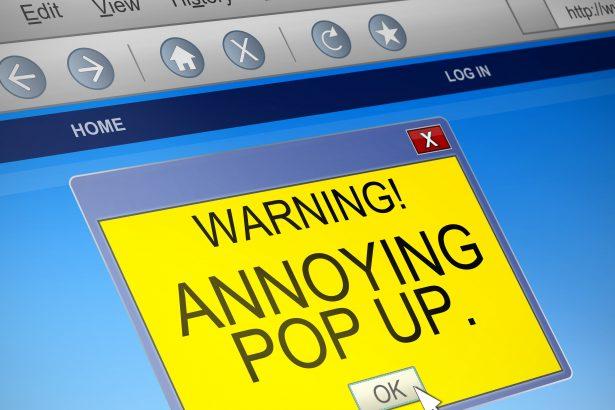Mospross.co.in is a deceptive website that tricks users into subscribing to its browser notifications, leading to a barrage of intrusive pop-up ads and redirects to potentially harmful sites. This behavior classifies it as a browser hijacker, specifically designed to exploit browser notification features for malicious advertising purposes.
Threat Overview
Mospross.co.in operates by presenting fake CAPTCHA verifications to users, prompting them to click “Allow” to confirm they are not robots. Once this permission is granted, the site gains the ability to deliver unsolicited advertisements directly to the user’s desktop or mobile device. These ads often promote scams, dubious software, or even malware, posing significant risks to users’ privacy and system security.
Threat Summary
| Attribute | Details |
|---|---|
| Threat Type | Browser Hijacker / Push Notification Spam |
| Associated Domain | mospross.co.in |
| Detection Names | Not specified |
| Symptoms of Infection | Unwanted pop-up ads, browser redirects, decreased browsing speed, and notifications from unknown sources |
| Damage | Potential exposure to scams, malware infections, privacy breaches, and financial losses |
| Distribution Methods | Deceptive pop-up ads, fake CAPTCHA verifications, and potentially unwanted applications (adware) |
| Danger Level | Medium |
| Removal Tool | SpyHunter |
In-Depth Analysis
How Did I Get Infected?
Users typically encounter Mospross.co.in through redirects from dubious websites or by clicking on misleading advertisements. The site employs social engineering tactics, such as fake CAPTCHA tests, to deceive users into enabling browser notifications. Once permissions are granted, the site starts delivering unwanted ads directly to the user’s device.
What Does It Do?
After gaining notification permissions, Mospross.co.in bombards the user with intrusive ads that can lead to:
- Exposure to phishing scams and fraudulent websites
- Installation of potentially unwanted programs (PUPs)
- System performance degradation due to constant ad delivery
- Compromised user privacy through tracking and data collection
Should You Be Worried?
Yes. While Mospross.co.in may not directly install malware, its behavior can lead to serious security risks, including exposure to malicious content and unauthorized data collection. Prompt removal is essential to protect your system and personal information.
Manual Removal Guide for Browser Hijackers
Step 1: Uninstall Suspicious Programs (Windows & Mac)
Before resetting your browser, remove any software that may have installed the hijacker.
Windows (10, 11, 8, 7)
- Press
Win + R, typeappwiz.cpl, and hit Enter. - Find Unwanted Applications
- Look for recently installed programs that seem suspicious (e.g., “EasySearch,” “QuickFind,” “Search Manager”).
- Uninstall
- Click on the suspicious program > Select Uninstall > Follow on-screen instructions.
Mac (macOS Ventura, Monterey, Big Sur, Catalina, Mojave, etc.)
- Open Finder and go to Applications.
- Look for unknown or unwanted programs.
- Drag any suspicious apps to the Trash and empty the Trash.
Step 2: Remove Browser Hijacker from Web Browsers
Google Chrome
- Reset Chrome to Default Settings
- Open Chrome > Click ⋮ Menu (top-right corner) > Settings.
- Scroll down and select Reset settings > Click Restore settings to original defaults > Confirm.
- Remove Suspicious Extensions
- Open chrome://extensions/ and remove unknown extensions.
- Change Default Search Engine & Homepage
- Go to Settings > Search engine > Select Google or another trusted search engine.
- Under On Startup, remove any unwanted URLs.
Mozilla Firefox
- Reset Firefox
- Click the Menu (☰) > Select Help > Click More Troubleshooting Information > Refresh Firefox.
- Remove Unknown Extensions
- Open Add-ons Manager (
Ctrl + Shift + A) > Remove any suspicious extensions.
- Open Add-ons Manager (
- Change Search Engine & Homepage
- Open Settings > Search > Choose Google or another safe search engine.
Microsoft Edge
- Reset Edge
- Click ⋮ Menu > Settings > Reset settings > Restore to default values.
- Remove Unwanted Extensions
- Open edge://extensions/ and remove any unfamiliar extensions.
Safari (Mac Only)
- Reset Safari & Clear Data
- Open Safari > Click Safari (top-left menu) > Select Clear History.
- Go to Preferences > Privacy > Click Manage Website Data > Remove All.
- Delete Suspicious Extensions
- Open Safari > Preferences > Extensions > Remove anything unfamiliar.
- Change Homepage & Search Engine
- Open Preferences > General > Change your homepage to a trusted site.
- In Search, set your search engine to Google or a preferred option.
Step 3: Check for Unauthorized System Changes
Windows – Check the Hosts File
- Open Notepad as Administrator (
Win + S, type Notepad, right-click, Run as Administrator). - Click File > Open and navigate to:makefileCopyEdit
C:\Windows\System32\drivers\etc\hosts - If you see unknown IPs or URLs at the bottom, remove them.
- Save changes and restart your computer.
Mac – Check the Hosts File
- Open Terminal (
Command + Space, typeTerminal). - Type:bashCopyEdit
sudo nano /etc/hosts - Look for suspicious entries and delete them.
- Press
Ctrl + X, thenY, thenEnterto save.
Automatic Removal Using SpyHunter (Windows & Mac)
For those who prefer a quick, hassle-free removal process, using SpyHunter is highly recommended.
Step 1: Download SpyHunter
Click here to download SpyHunter: Download SpyHunter
Step 2: Install & Run SpyHunter
- Follow the instructions on the SpyHunter Download Page to install the software.
- Open SpyHunter and run a full system scan.
Step 3: Remove Browser Hijackers
- SpyHunter will detect all malware and potentially unwanted programs.
- Click Fix Threats to remove the detected hijacker.
- Restart your device to complete the cleanup process.
Step 4: Reset Browser Settings (If Necessary)
Even after SpyHunter removes the hijacker, you may need to reset your browser settings manually (refer to browser-specific instructions above).
Preventing Future Browser Hijacker Infections
- Be cautious when installing free software – opt for Custom Installation to avoid bundled malware.
- Avoid clicking on suspicious ads or pop-ups – they often distribute browser hijackers.
- Keep your operating system and software updated – outdated programs are more vulnerable to infections.
- Use a trusted anti-malware tool like SpyHunter to provide real-time protection against threats.
Conclusion
Mospross.co.in is a malicious browser hijacker that exploits browser notification features to deliver unwanted ads and potentially harmful content. Users should be cautious when encountering such sites and avoid granting notification permissions to untrusted sources. Utilizing reputable anti-malware tools like SpyHunter can aid in detecting and removing such threats effectively.




